Products are selected by our editors, we may earn commission from links on this page.
The Civil War wasn’t just muskets and mayhem—it was a drama-filled era with enough quirks to rival a reality TV show. From groundbreaking inventions to human resilience and the occasional ironic twist, these snapshots from history reveal the untold stories that textbooks simply didn’t have room for. So, dust off your time-travel goggles; we’re diving headfirst into the wild, wonderful chaos of Civil War history.
Admiral Dahlgren’s Cannonball Genius

Admiral John Dahlgren brought a boom to the battlefield with his Smoothbore Howitzer. These naval guns were the iPhones of their time: mpossible for the Confederacy to compete with.
With these cannons, Union ships of all sizes suddenly had a way to bring the hurt. Confederate dinghies didn’t stand a chance against Dahlgren’s floating fireworks factory.
Nicknamed the “Father of American Naval Ordnance,” Dahlgren proved that in war, a better cannon can indeed win you the day—and maybe some bragging rights.
Sisters of Mercy: Compassion in Chaos

Sister M.M. Joseph and her nun squad weren’t checking political allegiances at Hammon Hospital. They patched up wounds from both sides, offering bandages instead of judgment.
The hospital transformed under their care. Enemies shared hospital beds, proving that a broken femur doesn’t care about your allegiance.
These sisters reminded a divided nation that humanity could survive even the bloodiest of wars. Their bandages were more than cotton—they were symbols of hope.
Philip Sheridan’s Scorched-Earth Showstopper

Union General Philip Sheridan decided, “If we can’t use it, no one can!” His Shenandoah Valley campaign left Confederate resources toastier than a campfire marshmallow.
Sheridan’s fiery strategy obliterated enemy supplies, making him a Union hero and the South’s number one villain. His “burn it all” approach was ruthless but effective.
By the end of the war, Sheridan’s scorched-earth tactics helped pave the way for Union victory. Moral of the story? Don’t leave your barn unattended.
Harriet Tubman: The Spy Who Freed Me

Harriet Tubman wasn’t just an Underground Railroad conductor—she moonlighted as a Union spy, sneaking past enemy lines with more stealth than a ninja.
Her missions weren’t just daring; they were lifesaving. Over 70 enslaved individuals found freedom thanks to her bold rescues.
Even after the war, Tubman kept fighting for civil rights, proving she wasn’t just a hero of her time—she was a hero for all time.
John Sedgwick’s Unfortunate Elephant Tale

General John Sedgwick was confident Confederate snipers couldn’t hit an elephant at long range. Unfortunately, he tested his own theory—and the sniper hit his mark.
Sedgwick’s death was a massive loss for the Union, but his final words ensured he’d be remembered for both brilliance and tragic irony.
Even General Grant mourned his loss, a testament to Sedgwick’s tactical genius. Turns out, overconfidence can be a killer—literally.
Matthew Brady: Photography’s Pricey Pioneer
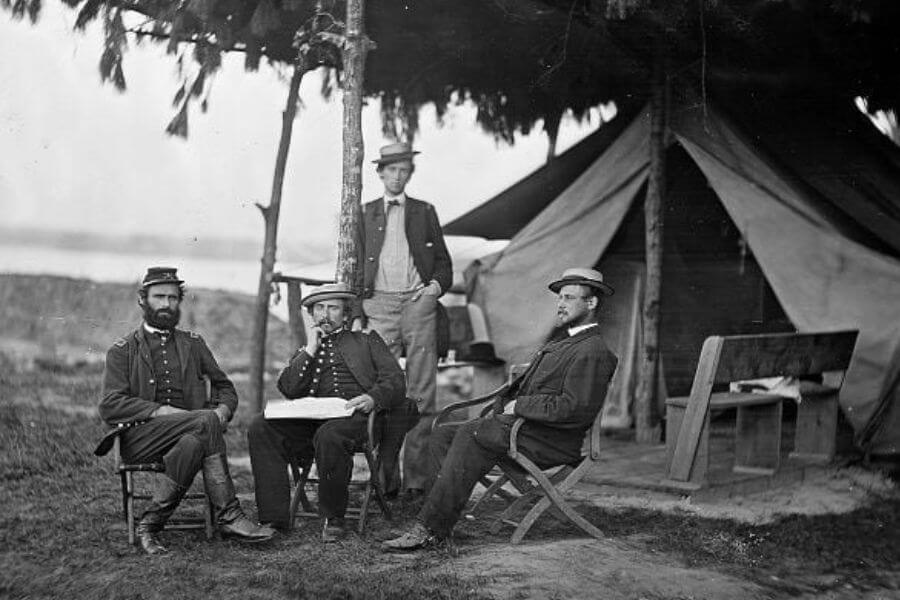
Matthew Brady dared to bring the Civil War’s gruesome reality to the public through his haunting photographs. Spoiler: the public wasn’t ready for it.
Despite capturing history’s raw truth, Brady’s images didn’t pay the bills. America wasn’t in the mood to hang war carnage on their walls.
He died penniless, but his work endures as a visual diary of a nation tearing itself apart—and painfully stitching itself back together.
The Unsung Laundress Army

Scrubbing blood-soaked uniforms wasn’t glamorous, but Union laundresses kept armies healthier by tackling germs before germs even knew they existed.
These hardworking women, often from poor or marginalized backgrounds, turned piles of grime into wearable garments under battle-torn skies.
Without them, disease would’ve spread faster than battlefield rumors. Who knew laundry could be the ultimate act of heroism?
General Burnside: A Tale of Facial Hair Infamy

Ambrose Burnside’s battlefield record might have been shaky, but his sideburns were a solid win. So iconic were his whiskers that the term “sideburns” is named after him.
While his leadership at Fredericksburg flopped, his facial hair legacy outlasted the Confederacy. Not all victories are won on the battlefield.
In the end, Burnside proved one thing: sometimes, history remembers the hair, not the heroics.
George Custer: Hero to Heartbreaker

Custer’s Civil War heroics painted him as a dashing cavalry star. But post-war, his ego led him straight into disaster at Little Bighorn.
During the war, his flashy leadership inspired troops, but arrogance became his undoing in later years, earning him a tragic place in history.
His infamous “last stand” overshadowed his earlier triumphs, reminding us that even heroes should double-check their plans.
Francis E. Brownell: Revenge in the Name of Honor

When his commander, Colonel Ellsworth, was shot for removing a Confederate flag, Francis Brownell didn’t hesitate to avenge him.
In a swift act of justice, Brownell shot the attacker, earning a Medal of Honor years later and a permanent spot in Civil War lore.
Brownell’s story shows that sometimes, even the smallest acts of loyalty can echo through history.
Cavalry Units: The Original Horsepower

During the Civil War, cavalry wasn’t just for dramatic charges—it was the war’s multitool. Whether scouting, skirmishing, or stealing chickens, horse-mounted units were indispensable.
Confederate cavalry initially excelled, thanks to their riders’ rural upbringings. But the Union quickly adapted, transforming their cavalry into a formidable force.
By the war’s end, Union cavalry played a key role in battles, proving that even in the age of gunpowder, a good horse was still worth its weight in oats.
Child Soldiers: Too Young for Shaving, Perfect for Fighting

Teenagers, and sometimes even pre-teens, found themselves drafted into the Civil War, swapping schoolbooks for rifles. It was a grim reality of the desperate times.
Some served as drummer boys, signaling commands with drumbeats. Others took up arms, facing horrors no child should ever endure.
These kids often became symbols of bravery and tragedy, showing the heartbreaking costs of war when childhoods were traded for battlefields.
The Harsh Reality of Amputations

If you heard “pass the saw” during the Civil War, chances were it wasn’t for carpentry. Amputation became the go-to treatment for battlefield injuries.
Sanitary practices were nonexistent. Doctors reused tools without cleaning, turning surgeries into infection festivals that made recovery a miracle.
Despite the crude methods, amputations saved lives—though soldiers often left the battlefield with fewer limbs and a heavy dose of resilience.
Arlington Cemetery: Resting in Lee’s Backyard

When the Union decided to repurpose Confederate General Robert E. Lee’s estate, they didn’t just take his land—they turned it into a graveyard for Union soldiers.
Burying fallen soldiers in Lee’s backyard ensured he’d never return. Petty? Maybe. Effective? Definitely.
Today, Arlington National Cemetery stands as a symbol of sacrifice, with its roots steeped in Civil War history and a touch of Union spite.
“The Dictator”: When Bigger Meant Better

Weighing in at a staggering 17,000 pounds, “The Dictator” was a Civil War cannon that made other artillery look like pea shooters.
Mounted on railroad tracks, it hurled 218-pound shells over two miles. Its terrifying size struck fear—and logistical headaches—into both sides.
While its effectiveness was limited by mobility issues, “The Dictator” showed the growing ambition of Civil War artillery.
Johnny Clem: Teen Sniper Extraordinaire

At just 12 years old, Johnny Clem became a Union legend when he picked off a Confederate officer. Trading his drum for a rifle proved a smart career move.
Captured during the war, Clem eventually rose to the rank of general. Not bad for a kid who started as a drummer boy.
Clem became a poster child for youthful bravery, surviving the war and inspiring generations with his remarkable story.
Gettysburg Retreat: Meade’s Almost Moment

After the Union victory at Gettysburg, General Meade hesitated to pursue the retreating Confederate Army, a move that frustrated President Lincoln.
This missed opportunity let Confederate forces regroup, extending the war and giving Lincoln yet another reason to stress-chew his hat.
Meade’s cautious approach may not have ended the war early, but it set the stage for Grant to take the reins and finish the job.
Civil War Uniforms: Fashion Faux Pas in Battle

If you thought Civil War uniforms were standard issue, think again. Soldiers often showed up wearing whatever was in their closets.
Confederate gray uniforms frequently faded to a less intimidating “butternut brown,” while Union troops occasionally sported mismatched gear.
This lack of consistency sometimes led to battlefield confusion, proving that even in war, bad fashion can cause problems.
War’s Unseen Enemy: Disease

Forget cannonballs—disease claimed more lives during the Civil War than combat. Unsanitary conditions turned camps into breeding grounds for deadly illnesses.
Dysentery, typhoid, and malaria spread faster than battlefield rumors, overwhelming doctors who had little understanding of germs.
For every soldier killed in action, two died of disease, making sickness the war’s most brutal adversary.
Music: The Soundtrack of Survival

Music wasn’t just entertainment—it was a lifeline. Soldiers found solace in songs, whether marching into battle or reminiscing about home.
Rival bands dueled with melodies before battles, lifting spirits and setting the tone for the chaos to come. It was a musical prelude to mayhem.
Even in the darkest moments, music brought unity and hope, proving that harmony could exist amid discord.
Fort Sumter: Shots Fired, War Begun

Fort Sumter wasn’t just a military base—it was the match that lit the Civil War. After a 34-hour bombardment, Union forces surrendered the fort to the Confederates.
This symbolic victory for the South marked the official start of the war, setting the stage for years of bloody conflict.
Though the Union later reclaimed Fort Sumter, its fall remains an enduring symbol of the nation’s fracture.
The CSS Albermarle: Ironclad and Indestructible
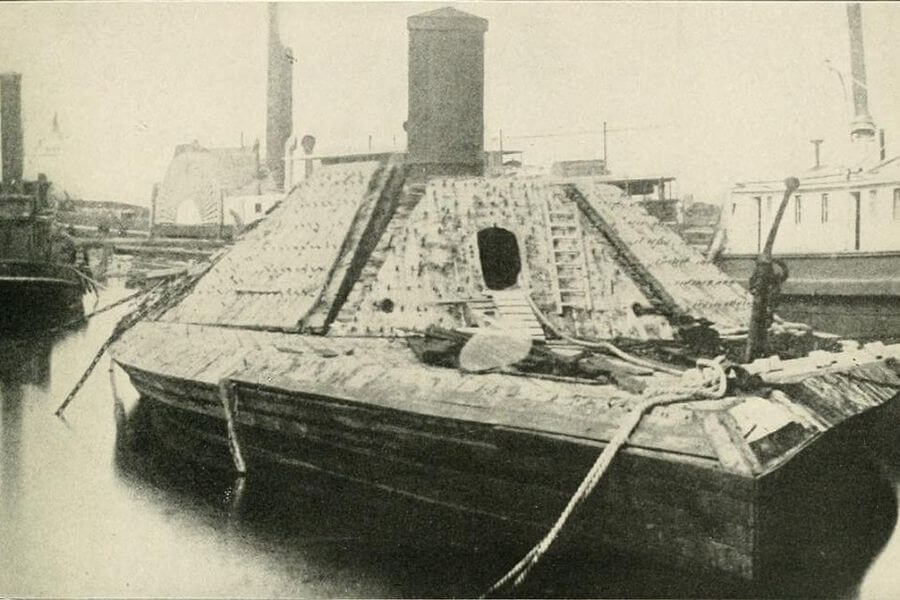
The Confederate ironclad Albermarle was a floating fortress that wreaked havoc on Union naval forces. Its thick armor made it nearly impervious to enemy fire.
During one infamous encounter, the Albermarle sank a Union ship while shrugging off everything thrown at it. It was a naval nightmare for the Union.
Though its reign of terror ended when Union forces sank it, the Albermarle proved that ironclads were the future of naval warfare.
Observation Balloons: Spies in the Sky
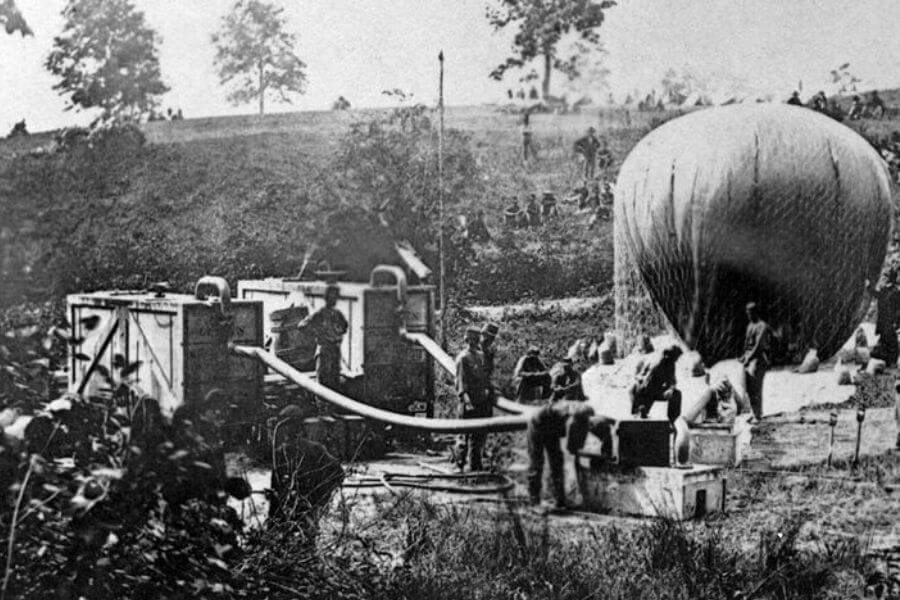
Civil War espionage went airborne with observation balloons. These floating platforms gave Union forces a bird’s-eye view of Confederate positions.
Despite occasional mishaps—like drifting into enemy territory—these balloons showcased the potential of aerial reconnaissance.
They weren’t perfect, but they paved the way for modern military surveillance, proving that sometimes, looking down on your enemy really is the best strategy.
Sherman’s Neckties: Railroad Revenge

When General Sherman wasn’t busy marching to the sea, he was wrecking Confederate railroads by twisting rails into unusable “neckties.”
This creative destruction hampered Confederate supply lines, making Sherman’s forces a logistical nightmare for the South.
The mangled tracks became a symbol of Union determination, leaving the Confederacy scrambling to repair the damage.
The Siege of Petersburg: Nine Months of Stalemate

The Siege of Petersburg dragged on for nine exhausting months, as Union forces tried to choke off Confederate supply lines.
With five major railroads converging at Petersburg, the city was critical to the Confederate war effort. Its fall marked the beginning of the end.
When Union forces finally broke through, it was a major turning point, sealing Richmond’s fate and hastening the war’s conclusion.
Lincoln’s Brush With Death

Abraham Lincoln’s war wasn’t confined to speeches and paperwork—he had some close calls on the battlefield. Once, a Confederate bullet nearly turned his top hat into Swiss cheese.
Despite his towering height and that iconic hat making him an easy target, Lincoln survived the war’s chaos, earning his “lucky leader” badge.
These brushes with danger only deepened his resolve, showing that even near-misses couldn’t deter his dedication to preserving the Union.
The Ironclad Revolution: Naval Warfare Reinvented
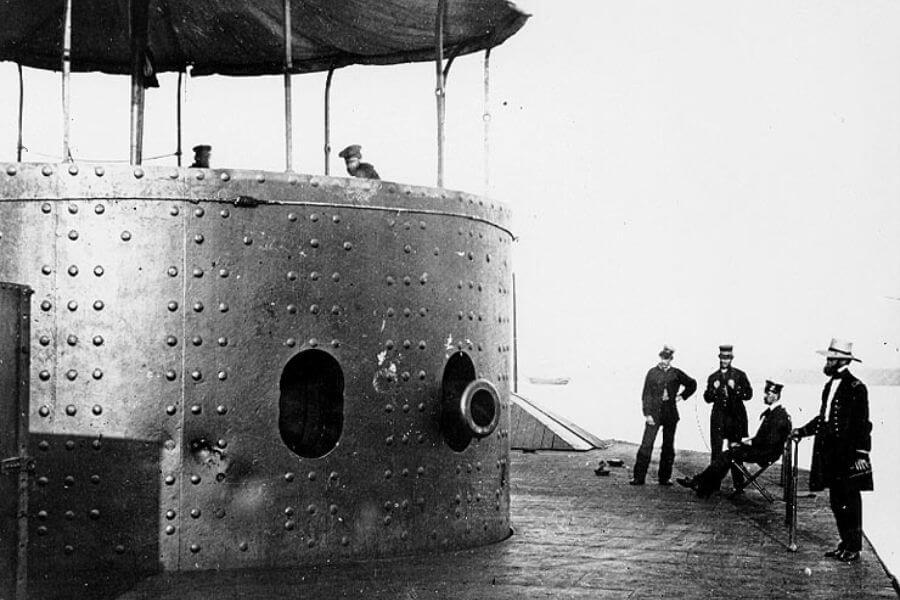
The USS Monitor and CSS Virginia weren’t just ships—they were floating tanks that made wooden vessels obsolete. Their showdown at Hampton Roads changed naval combat forever.
With iron armor and innovative designs, these ironclads shrugged off cannon fire like it was confetti, ushering in a new era of naval warfare.
Though their battle ended in a stalemate, the ironclads proved that in war, evolution doesn’t wait for a truce.
Sewell’s Point: The Skirmish Nobody Won

The Battle of Sewell’s Point was an early naval tussle where Union ships traded blows with Confederate fortifications. Spoiler: no one really came out on top.
This inconclusive clash was more about testing waters than making waves, but it set the tone for future naval engagements in the Civil War.
While not a headline-grabber, Sewell’s Point highlighted how both sides were still figuring out this whole “modern war” thing.
The DIY Pontoon Bridge That Outsmarted Richmond

When Confederates burned bridges to stall Union advances, Union engineers rolled up their sleeves and built a 2,000-foot pontoon bridge instead.
This makeshift marvel allowed Union forces to outflank Richmond, leaving Confederate soldiers scratching their heads in disbelief.
The pontoon bridge wasn’t just a clever workaround—it was a testament to the ingenuity and persistence that defined the Union’s campaign.
International Relations: When Europe Watched (But Didn’t Act)

The Civil War wasn’t just America’s drama—it had global spectators. The Confederacy hoped Britain or France might jump in, but Lincoln kept them on the sidelines.
European powers were tempted to support the South for economic reasons, but the Emancipation Proclamation made backing the Confederacy a PR nightmare.
In the end, the war remained an American affair, though the world watched, popcorn in hand, to see how it would unfold.
Gettysburg: The Turning Point of the War
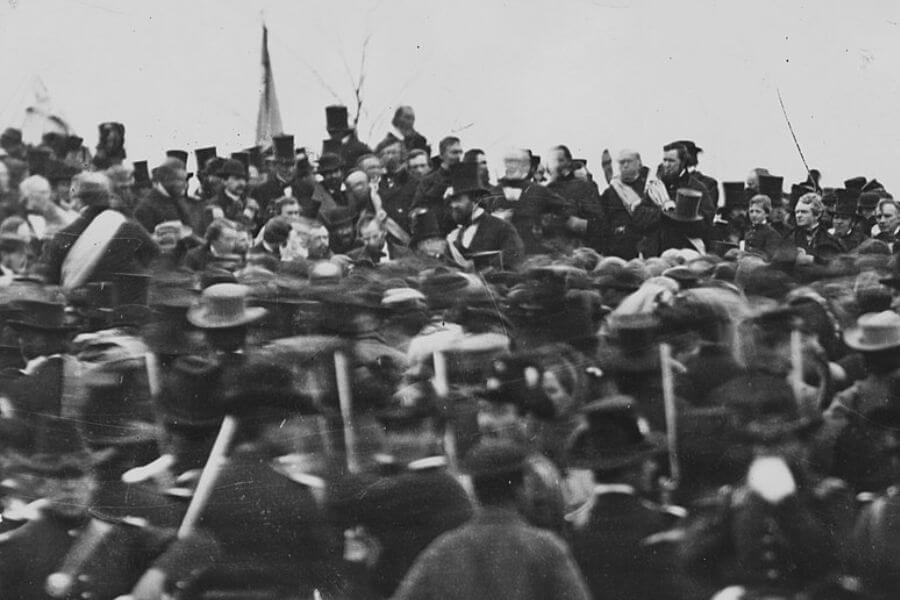
The Battle of Gettysburg wasn’t just a fight—it was the turning point of the Civil War. Over three days, Union forces halted Lee’s Northern invasion.
With staggering casualties on both sides, the battle ended in a decisive Union victory that shattered Confederate momentum.
Gettysburg’s significance lies in its legacy: a brutal reminder that sometimes, victory comes at an unimaginable cost.
Little Round Top: The Hill That Held the Line

On the second day of Gettysburg, Union forces defended Little Round Top from relentless Confederate assaults. The stakes? Control of the battlefield.
Led by Colonel Joshua Chamberlain, the Union soldiers stood firm, turning the tide of the battle with sheer grit and a dramatic bayonet charge.
Little Round Top became a symbol of courage under fire, proving that sometimes, the smallest high ground can make the biggest difference.
Pickett’s Charge: A Disaster in Broad Daylight

Confederate General Pickett’s bold, doomed assault on Union lines at Gettysburg was a gamble that ended in disaster. Thousands marched into a storm of Union fire.
The open-field charge was met with devastating artillery and rifle volleys, leaving half of Pickett’s men as casualties. It was bravery colliding with brutal reality.
Pickett’s Charge marked the “high-water mark” of the Confederacy—bold but ultimately unsustainable, much like the Southern war effort itself.
Richmond Burns: Chaos in the Confederate Capital

As Union forces closed in, Richmond descended into chaos. Fires, looting, and abandoned liquor stores turned the city into a blazing inferno.
The Confederate retreat left destruction in its wake, with flames consuming blocks of the capital as residents fled in panic.
When Union troops arrived, they extinguished the fires and began restoring order, signaling the Confederacy’s final collapse.
Rebuilding Richmond: From Ashes to Renewal

Post-war Richmond resembled a ghost town, its streets littered with rubble and memories of a lost cause. But rebuilding began almost immediately.
Union soldiers, Confederate prisoners, and civilians worked together to restore the city’s infrastructure, a small step toward national healing.
Though it took years, Richmond’s resurrection showed that even in devastation, the seeds of recovery could grow.
Union Infantry Uniforms: Function Over Fashion

The Union Army’s dark blue uniforms became iconic, but they weren’t exactly standardized. Some troops wore mismatched gear, and not all boots survived the march.
Despite the inconsistencies, these uniforms represented a united cause, even if some soldiers looked more “creative” than cohesive.
The blue coats became a symbol of the Union’s resolve, even as they frayed and faded under the strain of war.
Winfield Scott’s Anaconda Plan: Squeeze ‘Em Tight

Union General Winfield Scott’s strategy to suffocate the Confederacy with blockades and river control wasn’t flashy, but it worked like a charm.
Critics initially mocked the plan for being too slow, but its effectiveness became undeniable as Southern supplies dwindled.
The Anaconda Plan proved that sometimes, patience and persistence are more powerful than brute force alone.
Executing Lincoln’s Conspirators

After Lincoln’s assassination, the hunt for conspirators ended in trials and hangings. Among the executed was Mary Surratt, the first woman hanged by the U.S. government.
Public opinion was divided, with some questioning the fairness of her trial. Regardless, the executions marked a dark conclusion to the tragic chapter of Lincoln’s death.
The aftermath served as a grim reminder that even victory in war couldn’t protect the nation from heartbreak.
The Winans Steam Gun: Big Idea, Bigger Failure

The Confederate Winans Steam Gun was supposed to revolutionize warfare. Instead, it looked like a steampunk fever dream and was about as useful as a paper cannon.
Using centrifugal force to fire projectiles, the gun was bulky, unreliable, and ultimately a bust. It never saw action but earned a spot in the Hall of Weird War Tech.
Though a flop, it exemplified the inventive (and desperate) spirit of Civil War innovation.
Women Spies: Secrets, Sashes, and Sabotage

Confederate spies like Belle Boyd and Rose O’Neal Greenhow didn’t need muskets to wage war. Armed with charm and cunning, they infiltrated Union circles with aplomb.
These women gathered crucial intelligence, proving that espionage wasn’t just a man’s game. Their daring feats left a lasting impact on the war.
While some were caught and imprisoned, their contributions highlighted the often-overlooked roles women played in shaping history.
Drummer Boys: Communication in Battle

Drummer boys weren’t just there for dramatic effect—they were crucial for communication in the chaos of battle, drumming out orders to soldiers.
Often just kids, these young musicians braved gunfire to keep their beats steady, ensuring armies stayed coordinated amid the carnage.
Their courage and rhythm earned them respect, proving that even the smallest roles could have a big impact.
Fort Wagner: A Stand for Equality
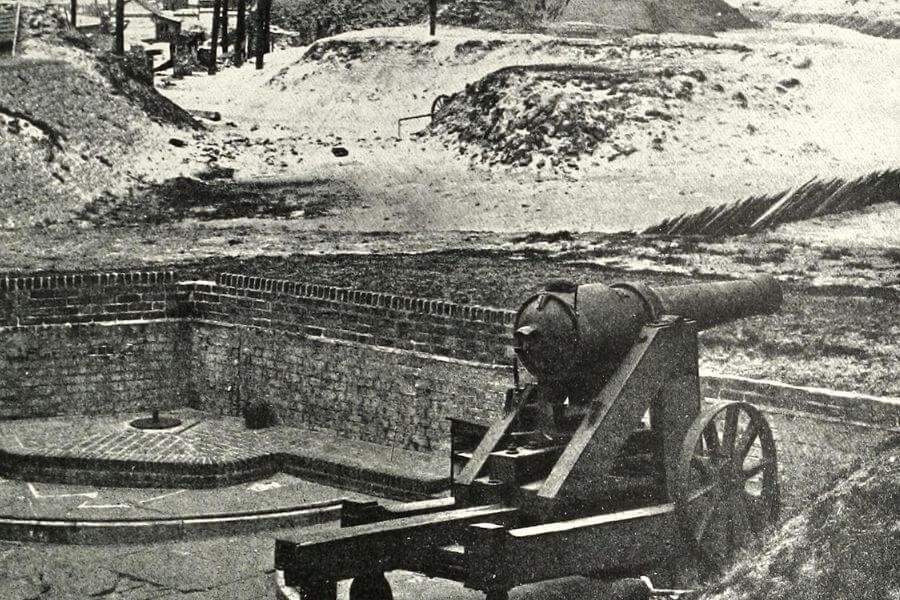
The 54th Massachusetts Infantry’s assault on Fort Wagner wasn’t a military win, but it was a moral victory. Their bravery challenged prejudices and advanced the cause of African American soldiers.
Though the battle was lost, it showed that Black soldiers were just as willing to fight and die for freedom as anyone else.
Fort Wagner became a rallying point for equality, inspiring more African Americans to join the Union ranks.
Marching Bands: War’s Traveling Jukeboxes

Before Spotify playlists, there were Civil War marching bands. These musical units lifted spirits and kept soldiers in step, providing a morale boost when it was needed most.
Pre-battle band duels became common, where rival bands tried to outplay each other in a last-minute musical morale war.
The music wasn’t just for show—it reminded soldiers of home and humanity, even when surrounded by destruction.
Lincoln’s Emancipation Proclamation: Freedom’s First Step
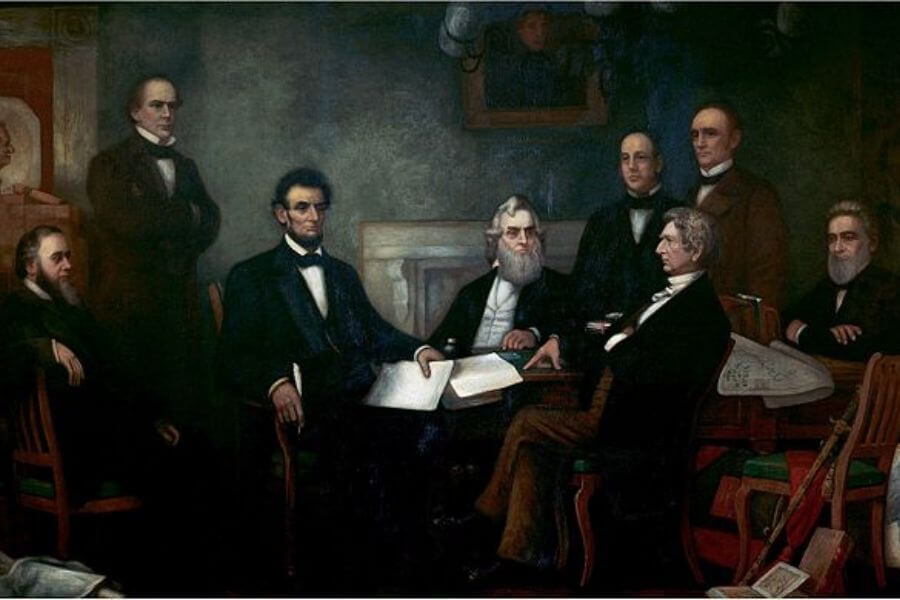
The Emancipation Proclamation didn’t instantly free all slaves, but it changed the war’s focus, making the abolition of slavery a Union goal.
Lincoln’s bold move shifted international opinion and prevented European support for the Confederacy, altering the war’s trajectory.
It became a cornerstone of American history, laying the groundwork for a nation striving toward equality.
The Union Victory at Appomattox

The Civil War’s conclusion wasn’t marked by fireworks but by a handshake. At Appomattox, General Lee surrendered to General Grant, ending four years of bloodshed.
Grant’s respectful treatment of Lee’s men set a tone of reconciliation, allowing Confederate soldiers to return home with dignity.
The surrender at Appomattox symbolized not just victory, but the beginning of a long journey toward healing a fractured nation.




